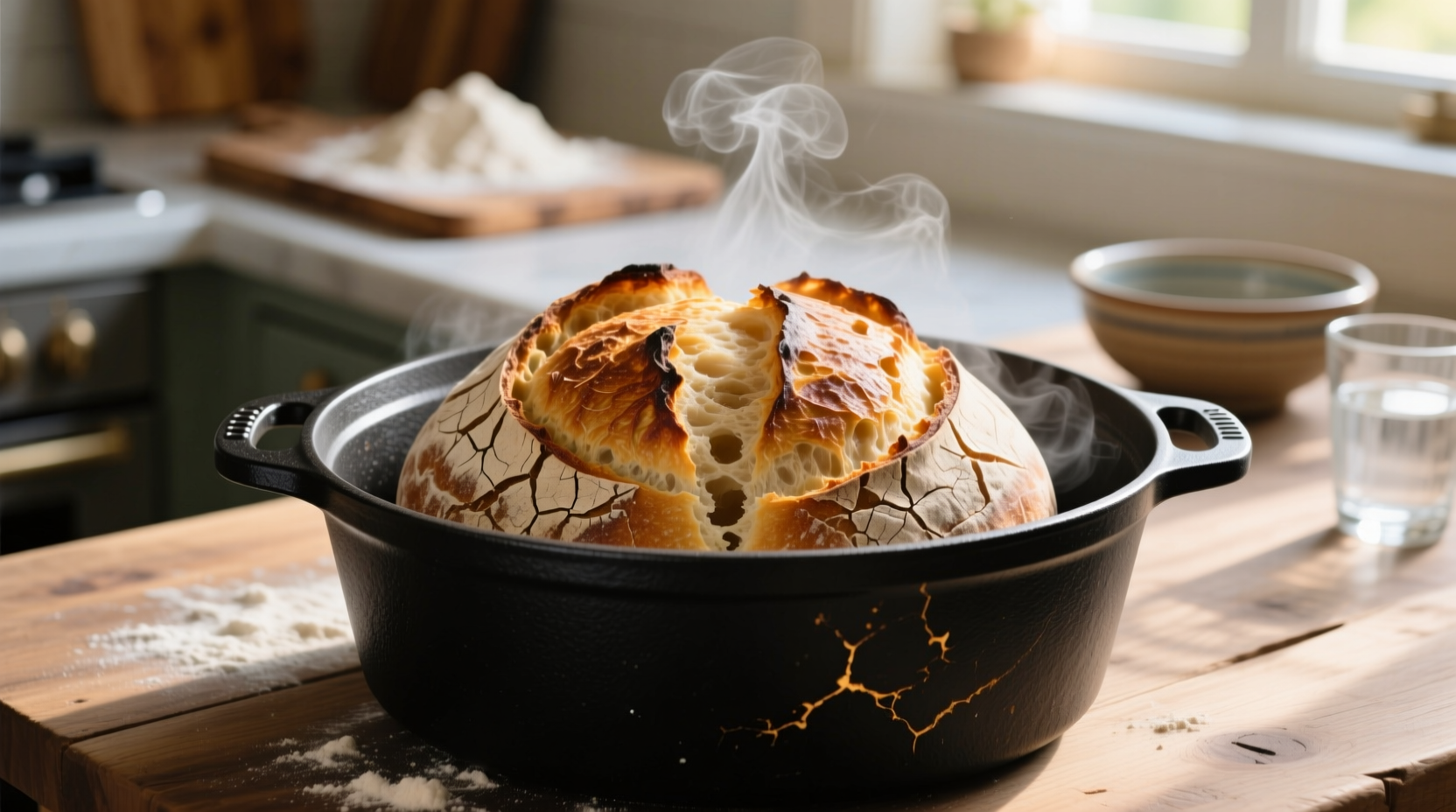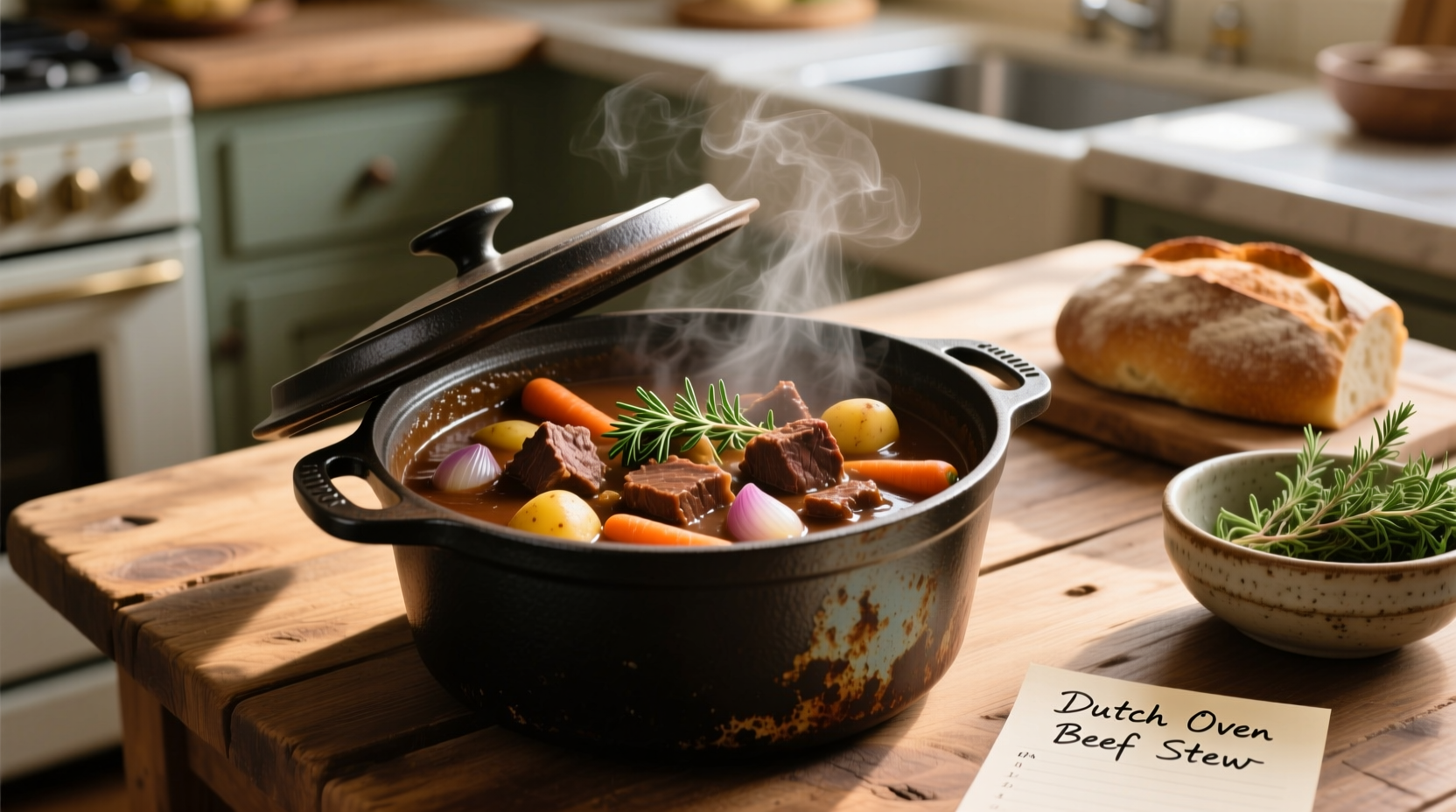Dutch ovens excel at braising, stewing, baking, and one-pot meals. The top three categories for Dutch oven cooking are: hearty stews and braises (like beef bourguignon), crusty artisan breads, and one-pot pasta dishes. Their cast iron construction provides superior heat retention for even cooking and perfect searing, while the tight-fitting lid traps moisture for tender results every time.
Discover the full potential of your Dutch oven with these practical cooking applications that transform weeknight dinners and weekend feasts. This versatile cookware isn't just for camping anymore—modern home kitchens benefit immensely from its unique cooking properties. Professional chefs and home cooks alike rely on Dutch ovens for dishes requiring precise temperature control and moisture management.
Why Dutch Ovens Outperform Other Cookware
Cast iron Dutch ovens provide unmatched heat retention and distribution compared to standard pots. According to the American Council for an Energy-Efficient Economy, cast iron retains heat 30% longer than stainless steel, making it ideal for recipes requiring consistent temperatures. This thermal stability prevents hot spots that can burn sauces or create unevenly cooked meats.
The heavy construction serves multiple cooking functions: excellent searing capabilities on the stovetop, even baking in the oven, and reliable simmering for hours. Unlike thin pots that react quickly to temperature changes, Dutch ovens maintain steady heat—crucial for developing complex flavors in slow-cooked dishes.
Perfect Weeknight Dinner Solutions
Busy home cooks appreciate Dutch ovens for one-pot meals that minimize cleanup while maximizing flavor. These three weeknight-friendly options demonstrate the cookware's versatility:
- One-Pot Chicken and Rice—Sear chicken thighs, then cook rice directly in the flavorful drippings without transferring pans
- Coq au Vin Simplified—Achieve restaurant-quality results with minimal active cooking time
- Weeknight Beef Stew—Reduce traditional cooking time by 40% while maintaining tender results
Food safety experts at the USDA Food Safety and Inspection Service confirm that the consistent temperature control of Dutch ovens helps maintain food within safe cooking ranges, reducing risk of undercooked proteins.
Mastering Bread Baking in Your Dutch Oven
No specialty equipment needed—your Dutch oven creates the perfect steamy environment for bakery-quality bread. The enclosed space traps moisture during the critical initial baking phase, allowing dough to expand fully before developing a crisp crust.
| Bread Type | Prep Time | Cooking Time | Special Tips |
|---|---|---|---|
| No-Knead Boule | 20 min | 45 min | Preheat empty Dutch oven for best oven spring |
| Whole Wheat Loaf | 25 min | 50 min | Add 2 tbsp water to bottom for extra moisture |
| Focaccia | 15 min | 30 min | Use shallow Dutch oven for proper thickness |
Photography shows the dramatic difference between bread baked with and without steam injection. The Dutch oven method produces superior oven spring and crust development compared to conventional baking techniques, as documented by the Bread Bakers Guild of America's testing protocols.

Outdoor Cooking Applications
Dutch ovens shine in outdoor settings where temperature control proves challenging. The National Park Service confirms cast iron's effectiveness for campfire cooking, noting its ability to maintain consistent temperatures despite fluctuating fire conditions.
When cooking over open flames:
- Use charcoal rather than direct flame for better temperature control
- Place coals on lid for even top-down heating (1/3 on bottom, 2/3 on lid)
- Monitor temperature with an oven thermometer placed inside
For beginners, start with simple cobblers or one-pot pasta dishes before attempting complex braises. The heavy construction protects food from flare-ups while distributing heat evenly across the cooking surface.
Avoiding Common Dutch Oven Mistakes
Even experienced cooks make these frequent errors:
- Overcrowding the pot—reduces searing effectiveness and creates steam instead of browning
- Using high heat unnecessarily—cast iron retains heat well; medium heat usually suffices
- Washing with soap—modern cast iron tolerates mild soap, but excessive detergent removes seasoning
- Storing while damp—always dry completely before storing to prevent rust
According to culinary research from the Culinary Institute of America, proper Dutch oven maintenance extends its lifespan by up to 20 years compared to neglected pieces. The seasoning process creates a natural non-stick surface that improves with proper care.
Seasonal Cooking Considerations
Dutch ovens adapt beautifully to seasonal cooking needs. During winter months, they excel at hearty stews and soups that simmer for hours. In summer, their oven-to-table functionality makes them perfect for no-cook kitchen meals—simmer dishes on the stove then serve directly at the table.
Food historians note that Dutch ovens have been used for seasonal cooking for centuries. The Winterthur Museum's collection includes 18th century Dutch ovens specifically designed for hearth cooking, with variations for summer (lighter weight) and winter (heavier construction) use.
Expanding Your Culinary Repertoire
Once comfortable with basics, explore these advanced applications:
- Frying—Maintains consistent oil temperature for perfect fried chicken
- Deep poaching—Ideal for delicate proteins like salmon or pears
- Slow roasting—Creates fall-off-the-bone meats with minimal monitoring
- Yogurt making—Provides steady low temperature for fermentation
Professional chefs at the James Beard Foundation frequently cite Dutch ovens as essential for developing complex flavor layers through controlled temperature transitions—from stovetop searing to oven finishing.
Frequently Asked Questions
These practical questions address common Dutch oven cooking concerns:











 浙公网安备
33010002000092号
浙公网安备
33010002000092号 浙B2-20120091-4
浙B2-20120091-4